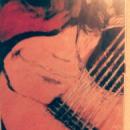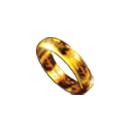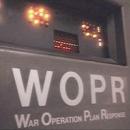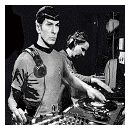Hola. Tengo un problema cuando conecto mi nueva audio interface de Native Instrument Komplete 6 al ordenador via USB 2.0 y abro cualquier aplicación de audio que no trabaje con los Drivers Asio propios de la tarjeta K6, es decir las aplicaciones multimedia, ya sea el reproductor de Windows, Youtube, Spotify etc... En estas aplicaciones se producen chasquidos o clicks de forma aleatoria y al cabo de un tiempo, el sonido empieza a crujir mucho y a relantizarse. El problema se soluciona momentaneamente cuando desenchufo y vuelvo a enchufar el cable USB, o bien cuando deshabilito y vuelvo a habilitar el K6 en el Administrador de dispositivos de Windows 7, o cuando reinicio el PC. En Cubase y demás aplicaciones que funcionan con los Drivers Asio va perfecta, no he notado nada raro.
He probado solucionarlo de varias formas:
- He descargado las últimas actualizaciones de los drivers de Native Instrument
- He deshabilitado la tarjeta de sonido nativa (Realteck) en el administrador de dispositivos y en la BIOS.
- He probado otros cables
- He conectado el aparato a una entrada USB 3.0 que instalé en una ranura PCI. Esto me soluciona el problema de los chasquidos pero en su lugar hace que se corte el sonido durante un segundo o así.
- He probado todos los puertos USB y desenchufar otros dispositivos USB como el teclado midi, discos duros externos etc..
- He bajado el buffer en el Control Panel de la Komplete Audio 6. y poner todas las combinaciones posibles de Sample Rate, Process buffer y USB buffer.
-He seguido los consejos que sugieren en el soporte oficial de Native Instrument http://www.native-instruments.com/es/support/knowledge-base/show/800/guia-de-solucion-de-problemas-para-interfaces-de-audio-pc/ sobre Administración de Energía.
- También hice todo lo que en este otro apartado indican http://www.native-instruments.com/es/support/knowledge-base/show/580/como-configurar-la-tarjeta-de-sonido-correctamente-pc/
- Llevé la tarjeta a la tienda y allí (tras esperar varias semanas) hicieron pruebas en sus equipos, incluso en Mac y no detectaron nada raro, con lo cual decían que no me la cambiaban y me ofrecían la posibilidad de mandarla a Barcelona para que Native Instrument lo estudiase internamente (bajo coste mio)
- He instalado dos aplicaciones de analísis de problemas de latencia, DPC Latency Checker y otra llamada LatencyMon. Esta última me detectó un problema de incompatibilidad con la tarjeta gráfica Nvidia GeForce, o mejor dicho con la forma que tiene esta de administrar la energía. Instalé un pequeño programa llamado Powermizer Switch para no permitir que la tarjeta gráfica gestionase esto, y LatencyMon dejó de mostrar el error, pero no solucionó el problema de los chasquidos. Incluso probé a deshabilitar la tarjeta gráfica y la tarjeta de red.
El programa LatencyMon me muestra ahora el siguiente mensaje:
Your system seems to have difficulty handling real-time audio and other tasks. You may experience drop outs, clicks or pops due to buffer underruns. One or more DPC routines that belong to a driver running in your system appear to be executing for too long. One problem may be related to power management, disable CPU throttling settings in Control Panel and BIOS setup. Check for BIOS updates.
También me ofrece esta información:
SYSTEM INFORMATION
_________________________________________________________________________________________________________
Computer name: CAMPUZANO-PC
OS version: Windows 7 Service Pack 1, 6.1, build: 7601 (x64)
Hardware: P55M-UD2, Gigabyte Technology Co., Ltd.
CPU: GenuineIntel Intel(R) Core(TM) i7 CPU 860 @ 2.80GHz
Logical processors: 8
Processor groups: 1
RAM: 16379 MB total
_________________________________________________________________________________________________________
CPU SPEED
_________________________________________________________________________________________________________
Reported CPU speed: 2798,0 MHz
Measured CPU speed: 217,0 MHz (approx.)
Note: reported execution times may be calculated based on a fixed reported CPU speed. Disable variable speed settings like Intel Speed Step and AMD Cool N Quiet in the BIOS setup for more accurate results.
WARNING: the CPU speed that was measured is only a fraction of the CPU speed reported. Your CPUs may be throttled back due to variable speed settings and thermal issues. It is suggested that you run a utility which reports your actual CPU frequency and temperature.
¿me recomiendan que cambie esto último de la velocidad variable? (suponiendo que sepa como se hace)Lei que si estos dos ultimos parametros andaban muy distantes, que era un problema.
¿a alguien mas le sucede?
¿alguna otra solucion?
Gracias!
He probado solucionarlo de varias formas:
- He descargado las últimas actualizaciones de los drivers de Native Instrument
- He deshabilitado la tarjeta de sonido nativa (Realteck) en el administrador de dispositivos y en la BIOS.
- He probado otros cables
- He conectado el aparato a una entrada USB 3.0 que instalé en una ranura PCI. Esto me soluciona el problema de los chasquidos pero en su lugar hace que se corte el sonido durante un segundo o así.
- He probado todos los puertos USB y desenchufar otros dispositivos USB como el teclado midi, discos duros externos etc..
- He bajado el buffer en el Control Panel de la Komplete Audio 6. y poner todas las combinaciones posibles de Sample Rate, Process buffer y USB buffer.
-He seguido los consejos que sugieren en el soporte oficial de Native Instrument http://www.native-instruments.com/es/support/knowledge-base/show/800/guia-de-solucion-de-problemas-para-interfaces-de-audio-pc/ sobre Administración de Energía.
- También hice todo lo que en este otro apartado indican http://www.native-instruments.com/es/support/knowledge-base/show/580/como-configurar-la-tarjeta-de-sonido-correctamente-pc/
- Llevé la tarjeta a la tienda y allí (tras esperar varias semanas) hicieron pruebas en sus equipos, incluso en Mac y no detectaron nada raro, con lo cual decían que no me la cambiaban y me ofrecían la posibilidad de mandarla a Barcelona para que Native Instrument lo estudiase internamente (bajo coste mio)
- He instalado dos aplicaciones de analísis de problemas de latencia, DPC Latency Checker y otra llamada LatencyMon. Esta última me detectó un problema de incompatibilidad con la tarjeta gráfica Nvidia GeForce, o mejor dicho con la forma que tiene esta de administrar la energía. Instalé un pequeño programa llamado Powermizer Switch para no permitir que la tarjeta gráfica gestionase esto, y LatencyMon dejó de mostrar el error, pero no solucionó el problema de los chasquidos. Incluso probé a deshabilitar la tarjeta gráfica y la tarjeta de red.
El programa LatencyMon me muestra ahora el siguiente mensaje:
Your system seems to have difficulty handling real-time audio and other tasks. You may experience drop outs, clicks or pops due to buffer underruns. One or more DPC routines that belong to a driver running in your system appear to be executing for too long. One problem may be related to power management, disable CPU throttling settings in Control Panel and BIOS setup. Check for BIOS updates.
También me ofrece esta información:
SYSTEM INFORMATION
_________________________________________________________________________________________________________
Computer name: CAMPUZANO-PC
OS version: Windows 7 Service Pack 1, 6.1, build: 7601 (x64)
Hardware: P55M-UD2, Gigabyte Technology Co., Ltd.
CPU: GenuineIntel Intel(R) Core(TM) i7 CPU 860 @ 2.80GHz
Logical processors: 8
Processor groups: 1
RAM: 16379 MB total
_________________________________________________________________________________________________________
CPU SPEED
_________________________________________________________________________________________________________
Reported CPU speed: 2798,0 MHz
Measured CPU speed: 217,0 MHz (approx.)
Note: reported execution times may be calculated based on a fixed reported CPU speed. Disable variable speed settings like Intel Speed Step and AMD Cool N Quiet in the BIOS setup for more accurate results.
WARNING: the CPU speed that was measured is only a fraction of the CPU speed reported. Your CPUs may be throttled back due to variable speed settings and thermal issues. It is suggested that you run a utility which reports your actual CPU frequency and temperature.
¿me recomiendan que cambie esto último de la velocidad variable? (suponiendo que sepa como se hace)Lei que si estos dos ultimos parametros andaban muy distantes, que era un problema.
¿a alguien mas le sucede?
¿alguna otra solucion?
Gracias!
Responder
Citar












